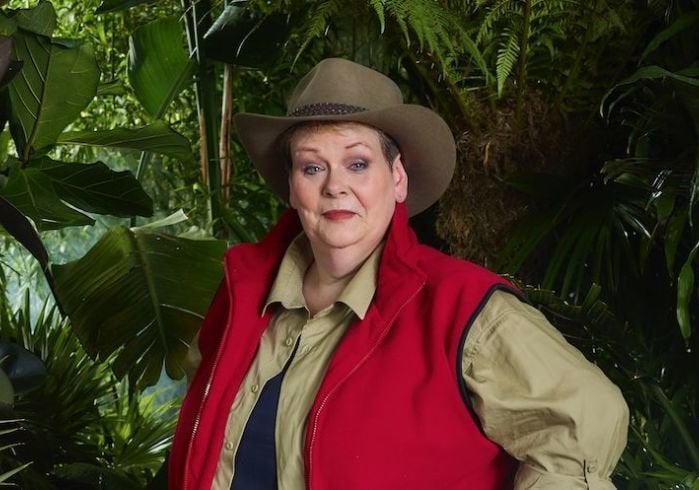
Anne Hegerty, most well-known as The Governess from The Chase, has been praised for opening up about being autistic on this season of I’m A Celebrity... Get Me Out Of Here!.
Despite getting stuck in on the first day of challenges, after the first trial the quizzer appeared visibly distressed, sobbing after her team failed. Watching Hegerty be comforted by her teammates, who all seemed to be managing the situation well, I instantly related.
Although some members of the public have already criticised Hegerty for what they perceive to be an overreaction to the situation, I recognised as a fellow autistic person how Hegerty might be struggling with the environment – the signs that an autism meltdown might be occurring.
Autism is a developmental disability existing on a spectrum. Every person experiences it differently, but it broadly affects our behaviour, social interactions, communication and the way the we receive sensory input. Sometimes, when overstimulated, autistic people can experience a meltdown, which is an intense reaction to overwhelming environments, a way of coping when the brain is overloaded by distressing stimuli.
The outward signs of an autistic meltdown – which commonly include crying, screaming, shouting, lashing out, kicking, breaking things – can be difficult to differentiate from the tantrums prevalent in reality TV, but are wholly different in nature. They are not about seeking attention, or sympathy, but about dealing with overwhelming emotions.
In a show like I’m A Celebrity, where temper tantrums are a ploy notoriously used to gain the audience’s attention, it will be hard for any autistic contestants like Hegerty not to come under fire when she goes into meltdown, particularly as the public may not recognise the autistic element coming into play.
According to the National Autistic Society, 99.5% of people in the UK have heard of autism, meaning that awareness is at an all-time high. Despite this, only 16% of autistic people and their families think that the public understand autism in a meaningful way.
Allistic (non-autistic) people may not recognise the aspects of the jungle which would be potentially very difficult for an autistic person like Hegerty to deal with. The lack of personal space, routine, different foods, being constantly surrounded by people, having sudden changes of plan thrown upon the contestants, loud noises, and lack of recovery time are all features which may present issues for an autistic person. They’re also all things that most people probably would not even give thought to.
Many autistic people develop coping strategies in order to help stave off meltdowns where possible and Hegerty herself recognises this in herself. On the Jeremy Vine show, she opened up about her experiences, saying “when you’ve grown up always knowing that there’s something that seemed to be different about you from most people, and not being able to understand until my mid-forties that what we were talking about here was autism, I’ve had to learn an awful lot about myself and what I can and can’t do and what I can or can’t cope with.”
Hegerty’s late diagnosis is not uncommon amongst autistic women, either. Whilst most autistic men are diagnosed as young boys, autistic girls are not and, like Hegerty, often grow up not knowing why they struggle. I was diagnosed aged 19, which I have found to be something of a rarity – most of the women I know were diagnosed far later into their lives, often when they had children and their sons were going through the diagnostic process.
The diagnostic process for autism has traditionally focussed on how autism manifests in men, leading to the long-held belief that autism was more common in boys. Now, it is thought that there are an equal number of autistic men and women, but that the symptoms of autism may manifest differently, meaning that the diagnostic assessments need to be adapted for women and girls. Additionally, many autistic women, who largely go undiagnosed, learn to ‘mask’ or camouflage their symptoms, for example social difficulties may be less visibly pronounced in girls who often teach themselves how to socialise.
Gender and autism is a complex topic and in many ways, I can understand how it is easier to decry Hegerty as a hysterical woman, having a breakdown in public for attention. You can’t tell whether a person is autistic or not by looking at them. Even those of us who are diagnosed but do not fit the stereotypes of our condition struggle to be seen as valid. In a society where 28% of autistic people have been asked to leave a public space because of behaviours associated with being autistic, it is imperative that we foster an understanding of what autism looks like and build inclusive spaces, understanding that people like myself and Anne may not respond to situations in the ways we have been socialised to expect.
